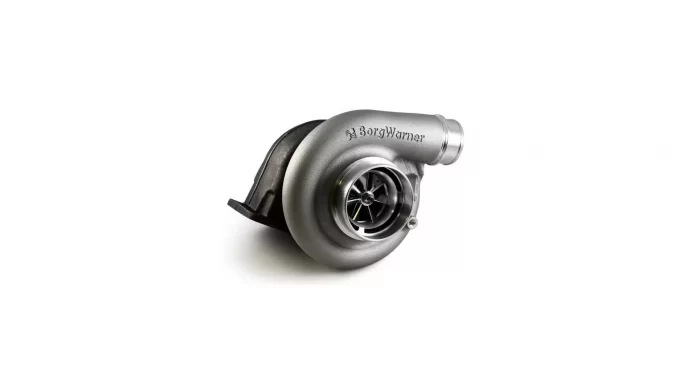Among all possible variants of internal combustion engine supercharging the most widespread is turbocharging, in which air is supplied to the cylinders by a special device – a turbocharger (turbine). The turbine is rotated by the exhaust gases, which allows increasing the engine power significantly without increasing the rpm of the latter.
In addition, turbocharging allows obtaining large values of torque at low fuel consumption. In comparison with classical designs, a turbocharged engine has more compact dimensions for the same power. Well, let’s look more closely at how it works.
How is the turbocharger system built?
In practice, turbocharging is used on both diesel and gasoline engines. However, the most common use of this system is on diesel engines, because they are characterized by a high compression ratio, lower exhaust temperature, and low crankshaft speeds. A higher compression ratio increases the power of a turbocharged engine and increases its efficiency.
Gasoline engines have higher exhaust temperatures, which can provoke a detonation effect, leading to rapid wear of the piston group. To prevent this phenomenon, it is necessary to use gasoline with a higher octane number, which is not always economical.
The turbocharger system consists of the following elements:
- Air intake.
- Air filter.
- Relief valve – regulates the flow of exhaust gases.
- Throttle valve – regulates the intake air supply.
- Turbocharger – increases air pressure in the intake system. It consists of a turbine wheel and a compressor wheel.
- Intercooler – cools the air, promoting better cylinder filling and reducing the chance of detonation.
- Pressure sensors – capture the boost pressure in the system.
- Intake manifold – distributes air to the cylinders.
- Connecting spigots – needed to attach the system components.
The turbocharger also makes it possible to use fuel efficiently and reduce the toxicity of the exhaust gases because the fuel burns off completely.
How does turbocharging work?
The principle of the turbocharger system is as follows:
- The exhaust gases from the engine, passing through the turbocharger, spin the turbine wheel.
- The rotation of the turbine wheel is transmitted to the compressor wheel because they are mounted on the same shaft.
- The compressor compresses the air coming from the air intake and directs it to the intercooler.
- The intercooler cools the air and sends it into the engine cylinders.
The turbocharger provides the ability to adjust the exhaust pressure on the turbine blades to prevent the system from overpressurizing. This is accomplished using a bypass valve that is pneumatically or electrically actuated. In turn, the actuator is controlled by an electronic control unit that reads information from a pressure sensor.
What are the peculiarities of operating turbocharged engines?
During the acceleration of the car due to the inertia of the system, there is a phenomenon called “turbo lag”. The essence of the phenomenon is as follows:
- The car is moving at a small constant speed.
- The turbine rotates in the appropriate mode.
- When the acceleration pedal is pressed sharply, more fuel is fed into the engine cylinders.
- After it is burned, exhaust gases are produced which act on the turbine with greater force and increase the engine power. However, this happens with some time delay.
Thus, there is some time delay between the moment of pressing the pedal and the actual acceleration of the car – “turbo lag”. Also, this phenomenon appears as a lack of torque at low engine speeds.
What types of turbocharger systems are available?
Manufacturers have developed different ways to get rid of “turbo lags”:
- Turbine with variable geometry. The design involves changing the cross-sectional area of the inlet channel. Due to this, the flow of exhaust gases is regulated.
- Two turbochargers are installed in series (Twin Turbo). A different compressor is provided for each operating mode (engine speed).
- Two turbochargers are installed in parallel (Bi-Turbo). The two-turbo split scheme reduces the inertia of the system, and the turbo lag is not as noticeable.
- Combination supercharger. The device provides both mechanical and turbocharging. The first one is activated at low revs and the second one – at high revs. As the rpm increases, the turbocharger picks up and the mechanical supercharger is disabled. An example of such a system is Volkswagen’s TSI twin supercharger.
When two consecutive turbines are installed on an engine, the maximum performance of the system is achieved by using different turbochargers at different engine speeds. Some manufacturers go even further and install three turbochargers in series – triple-turbo (BMW) and even four turbochargers – quad-turbo (Bugatti).
What are the advantages and disadvantages of the turbocharger system?
To summarize, the pros and cons of using a turbocharger on an engine can be highlighted. Some of the advantages include:
- Increase in engine power.
- Increased engine efficiency.
- Reduction of fuel consumption.
The disadvantages include:
- Low torque at low engine speeds.
- Higher cost.
- More complicated maintenance and operation.
Drivers who have switched from a naturally aspirated vehicle to a turbocharged model may need to change their driving style to maintain good efficiency, especially on the first trip.
What is a turbo timer and what is it for?
The other side of the inertia of a turbocharged system is the need to reduce the rpm gradually. The ignition should not be turned off abruptly after the engine has been running at high rpm. This is due to the fact that the bearings will continue to rotate, and since oil will not be supplied to the system – increased friction will occur. This, in turn, will provoke rapid wear of the turbine shaft.

To solve this problem, a turbo timer is used. This device is installed on the dashboard and connected to the ignition circuit. After switching off the ignition with the key, the system starts the timer, which switches off the engine after some time, allowing the turbine to reduce the rpm to acceptable values.






